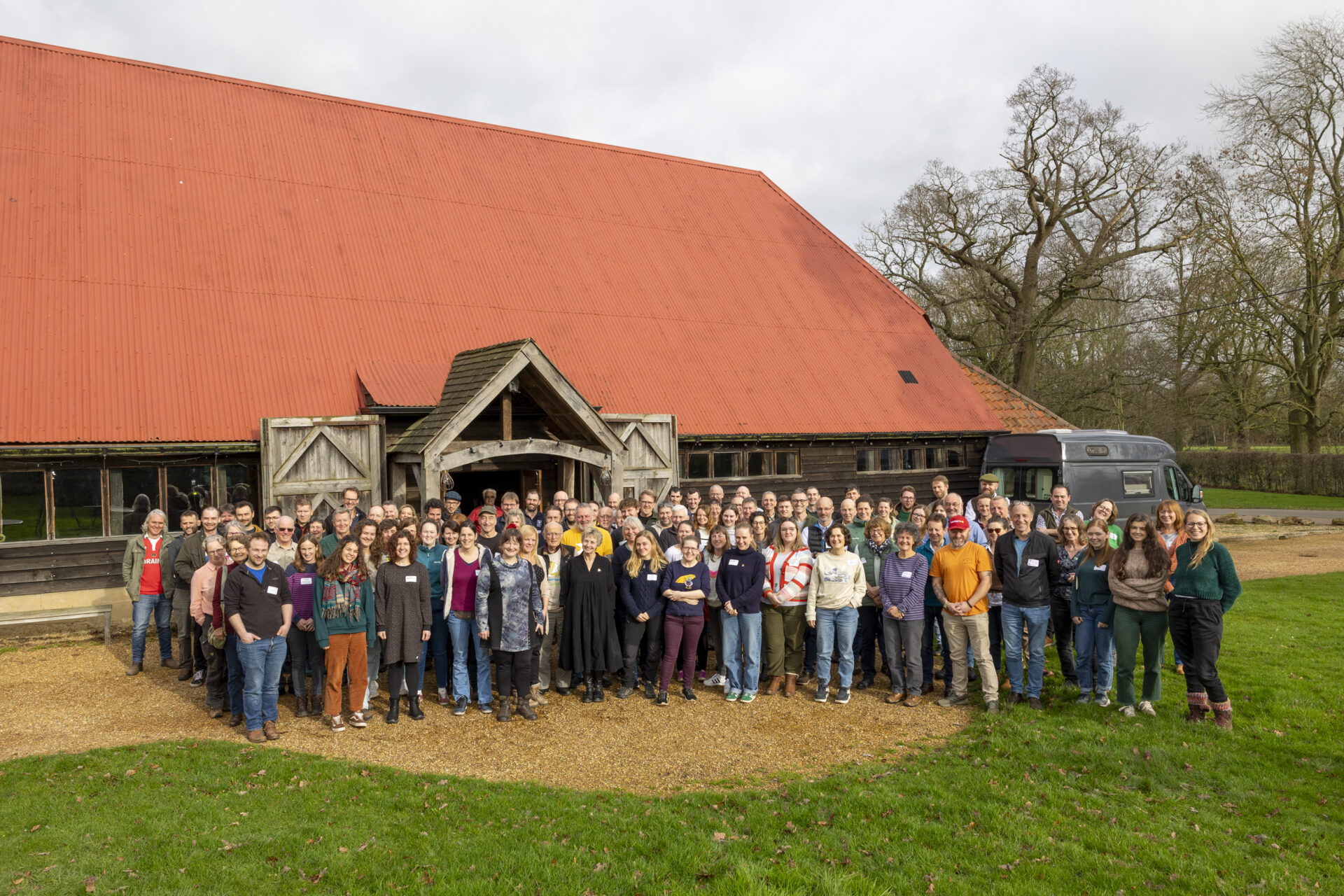Curlew chick in Belgium
Curlew Action is working to improve connections and communication between Curlew projects across the continent. Curlews are birds without borders and migrate across the European continent between wintering and breeding grounds; a large percentage of the birds we see wintering in the UK breed elsewhere and many of our own breeding birds winter in Ireland, Spain and Portugal. By improving communications, we are strengthening the collective skillset of fieldworkers and environmental policy makers and helping develop wide-ranging support networks. It is essential we protect Curlew in both their breeding and wintering areas. By donating to Curlew Action, you are helping to protect the Curlew across the European range.
European Curlew Fieldworker's Workshop, 2024
From the 9-11th February 2024, Curlew Action hosted the largest ever conference for Curlew fieldworkers. Over 100 practical Curlew conservationists from across the UK, Ireland, France, Finland, The Netherlands, Germany, Belgium and Poland came together to exchange views and experiences.

“That was a terrific weekend – thank you so much. Awesome line up! Coming away with brain bubbling with conversations – great event.”
We plan to host this event every two years, the next event will be in February 2026. Sign up to our newsletter to keep up to date. We have also created a WhatsApp community for fieldworkers across Europe, if you would like to be part of the community, please email ellen@curlewaction.org.
International visits

Finland, May 2023
As the UK and Finland hold the highest densities of Eurasian Curlew, communication between Curlew conservationists is important and instructive. This visit helped Curlew Action to gather a clearer picture of the similarities and differences between the UK and Finland, particularly the impact of forestry and predation. We found that the difference in predator make-up and distribution, the widespread practice of hunting in forests and much lower density of people, make it difficult for us to draw useful comparisons between the threats facing breeding Curlew in the UK and Finland. We will return to Finland to visit southern Curlew populations which nest in increasingly intensive farmland. Read a summary blog here.

The Netherlands, June 2023
Curlew Action took a member of Natural England on this trip to visit curlew nesting habitat in the NE of the country. It was a vital visit at a time when the new ELM schemes were being formulated and it allowed NE to learn from the Dutch approach to Curlew nesting on intensively managed farmland, both in terms of habitat management and farmer payment systems. A summary blog of this trip can be found here. In Feb 2024, fieldworkers from The Netherlands attended our European Fieldworker Workshop to share their knowledge with the wider Curlew community.

Poland, April 2024
We visited Polish breeding areas in the east of the country, which are concentrated in wide river valleys. Polish Curlews experience many of the same issues as Curlew in southern England, namely farming practices on river floodplains and high levels of predation by foxes and corvids. In addition, they were the first country in Europe to headstart Curlew, using a different method to that adopted in the UK, and many of their headstarted birds are now breeding and supporting their endangered population of only 200 pairs. As Ireland’s Curlew population is also under extreme threat, and Ireland wish to develop their own headstarting programme, we will facilitate information exchange and field visits.

Belgium, May 2024
We joined Griet Nijs, a Curlew hero working for the conservation organisation Natuurpunt, the largest environmental charity in Belgium. Curlews are Griet’s passion, and she works tirelessly to lead a small group of volunteers to save what remains of them, about 200 pairs throughout the country. We joined her in the field to find out more about why Curlews are faring so badly – a decline of between 50-60% in 20 years. We visited breeding areas and a wildlife rescue centre where rescued curlew eggs are being headstarted in mixed pens with lapwing and Oystercater. High predation pressure and unprecedented rainfall causing flooding of nests meant that most of the nests Griet was monitoring had already failed by May.
Webinars
Join us on Wednesday 13th of November 1t 18:30 to hear from fieldworkers from across Europe about the 2024 Eurasian Curlew breeding season. In 2025, we will be starting a mini series of short webinars focusing on each country in the European range. Sign up to our newsletter to keep up to date.

A one day old Curlew chick in Belgium.
Please help us to protect the Curlew across Europe. We still have so much work to do to ensure that these precious birds are protected across all breeding and wintering sites. Thank you for your support.










